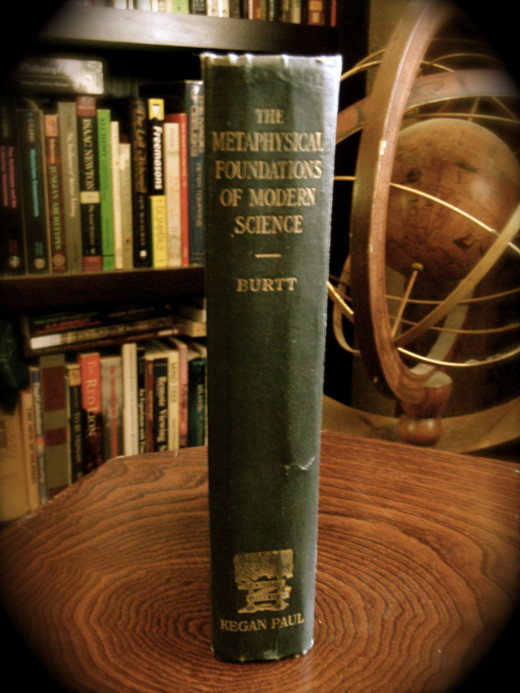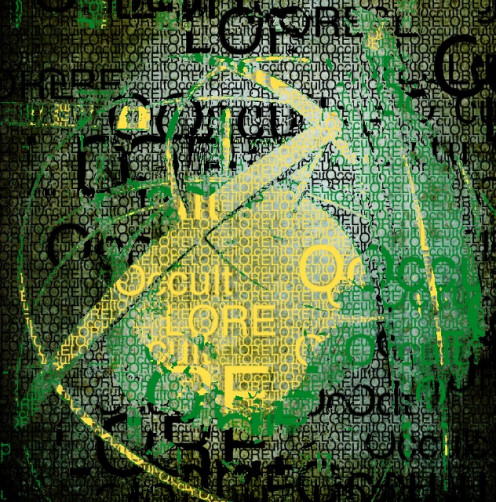Alchemical Riddles, Jabberwocky Nonsense, and the Sphinx of Black Quartz

The word “nonsense” is defined as “words or signs having no intelligible meaning: a message that was nonsense until decoded” and generally used to refer to absurd, foolish, and evasive behavior. If one attempts to decode the word nonsense itself - into “non-sense” – a different definition emerges: nonsense is that which is beyond the five senses, or that which is arrived at through none of the body’s senses, i.e. thought, emotion, the future, etc.
This literal interpretation of nonsense is paradoxical in that the word “sense” refers both to the five senses (sight, hearing, touch, taste, smell) and to one’s “senses” defined as “the mind” or “finding one’s way” as-in “sense of direction”. Such mind-body paradoxes form part of the foundation of philosophical ponderings and need no repeating here.

Alchemy, Cryptography and Metaphysical Nonsense
Careful examination of what is conventionally referred to as nonsense is usually revealing. Take the word “gibberish” defined as “unintelligible writing indicating the presence of nonsense.” A common etymological theory is that the word comes from “Geber” - the Latin name of the famous 8th-century Islamic alchemist, Jabir ibn Hayyan. The word “gibberish” arose as a reference to the incomprehensible alchemical writings used by Jabir and other alchemists who followed.
Many such alchemical writings make sense when the nonsense text is interpreted as a mnemonic (memory recall device) tool. If one has the recall code (sometimes encoded into a glyph that accompanies the text) or simply applies such creative interpretation then alchemical writing like Hayyan can become intelligible.
Beyond alchemy the arts are littered with layered meaningful 'gibberish', examples include the Voynich manuscript,Tlön, Uqbar, Orbis Tertius, and the works of M.C. Escher and Hieronymus Bosch.
The Codex Seraphinianus, originally published in 1981, is an illustrated encyclopedia with lavish hand-drawn, colored-pencil illustrations of bizarre and metaphysical flora, fauna, scientific anatomies, cultural fashions, and cuisine. The Codex is the creation of Italian artist, architect, and industrial designer Luigi Serafini. The book is written in a strange, unintelligible alphabet that has never been deciphered.

Beware the Jabberwocky
Another theory for the origin of gibberish stems from the similar word “jabber”. A famous bit of nonsensical verse is the “jabberwocky” by Lewis Carroll. According to Alice in Through the Looking-Glass, “Somehow it seems to fill my head with ideas – only I don't exactly know what they are!” Here is an excerpt:
Beware the Jabberwock, my son!
The jaws that bite, the claws that catch!
Beware the Jubjub bird, and shun
The frumious Bandersnatch!
The poem is famous for being rewritten. Many rewriters simply change the nonsense words into words relating to a parodied subject, such as:
Beware the Jabbercop, my space!
The jaws that bite, the claws that catch!
Beware the Twitter bird, and shun
The facebook googlesnatch!

The Extremes of Good and Evil by Cicero
Graphic designers are intimately familiar with nonsense. The most famous nonsense is the placeholder text “Lorem Ipsum” that has been in use in the printing industry for over five hundred years. Lorem Ipsum comes from sections 1.10.32 and 1.10.33 of “de Finibus Bonorum et Malorum” (The Extremes of Good and Evil) a treatise in Latin on the theory of ethics by Cicero, written in 45 BC.
The summary of this placeholder text used everyday around the world is that evil, or unintentional pain on oneself and on others, happens when you are not paying attention, unless you avoid it by maintaining awareness in the first place. The moral lesson here for designers and publishers is “pay attention to the nonsense you print” (also, the pain you feel because you’re sitting in front of a computer for hours on end can be avoided).

The Sphinx of Black Quartz
The other bit of nonsense that graphic designers experience is “Sphinx of black quartz judge my vow” which is displayed when choosing fonts in the Story Editor feature of InDesign. This is a pangram. It’s a sentence that uses every letter in the alphabet, such as the well-known (in the English-speaking world) “The quick brown fox jumps over the lazy dog.”
There are many pangrams, so why is the Black Quartz pangram used by Adobe? Such riddles are open for interpretation. Most computer screens today are LCDs (Liquid Crystal Display), thus a black crystal. What does it mean to stare into a dark crystal all day year after year? The first scribes in Egypt had to endure similar pain with the invention of writing, maybe there is a connection or it’s just more nonsense.



